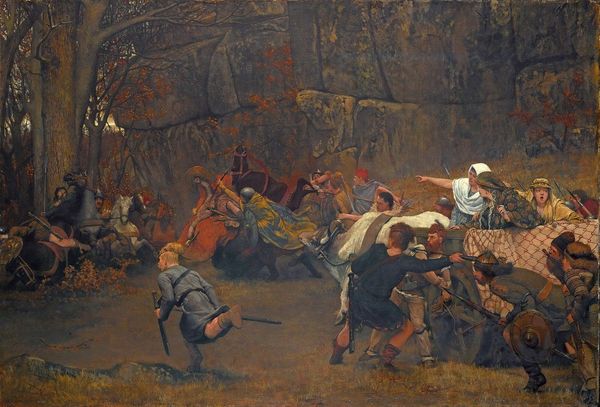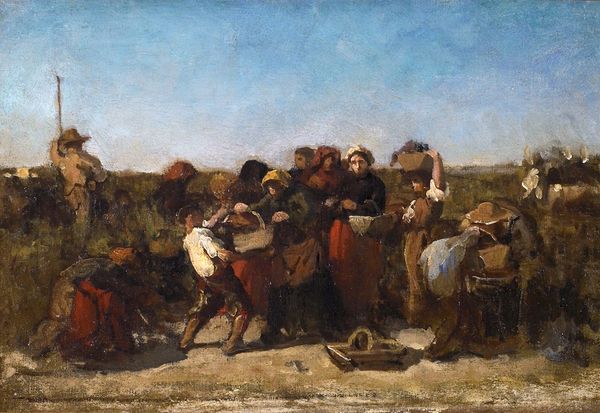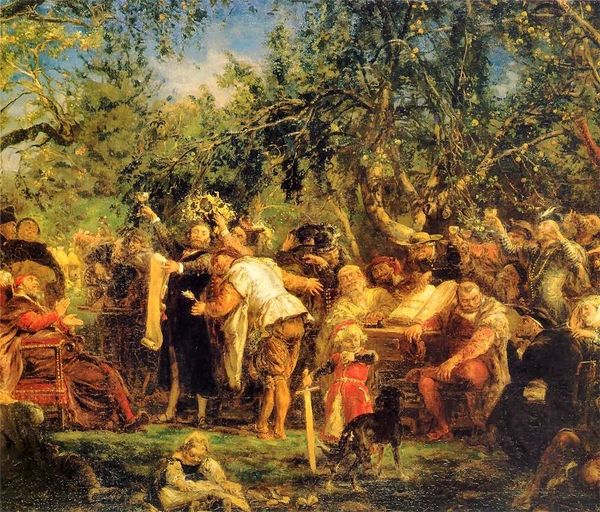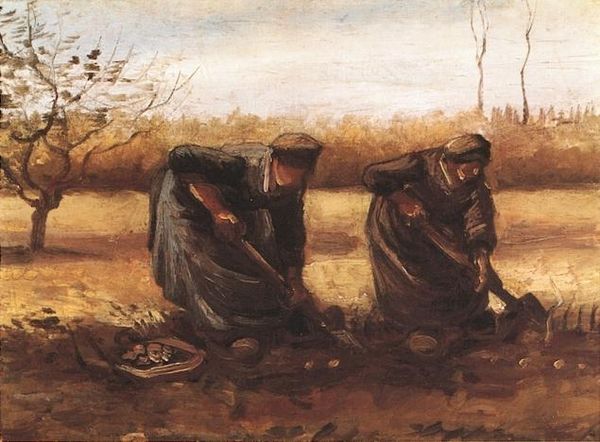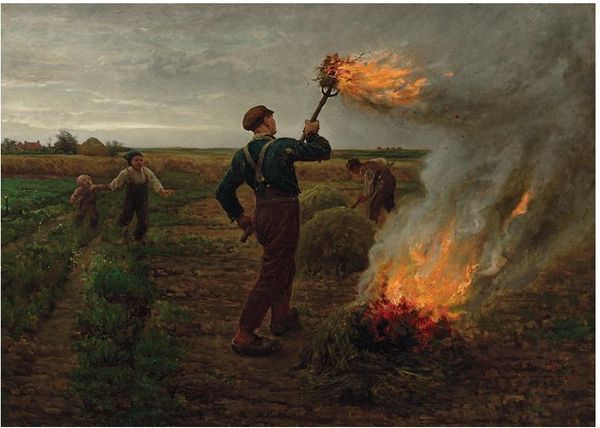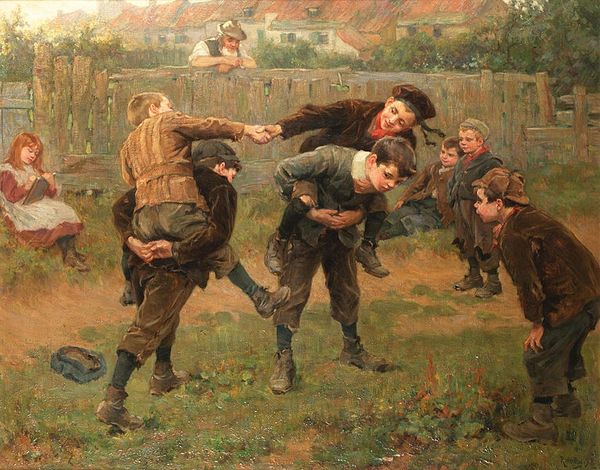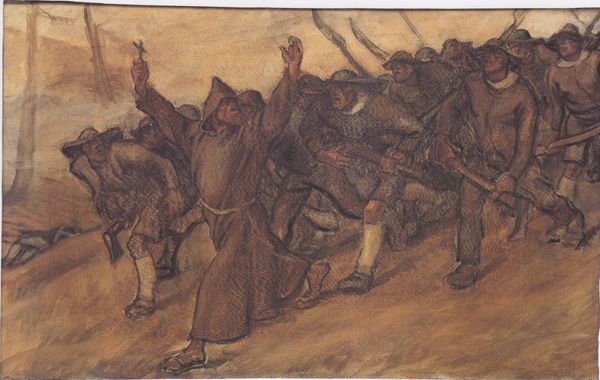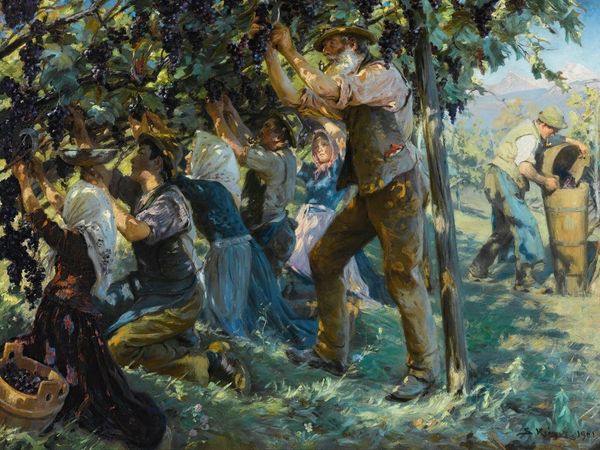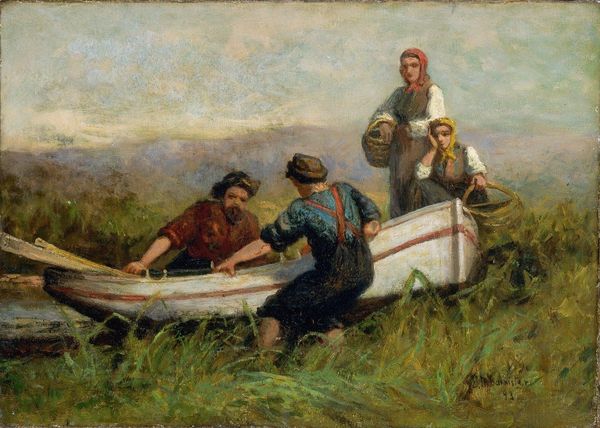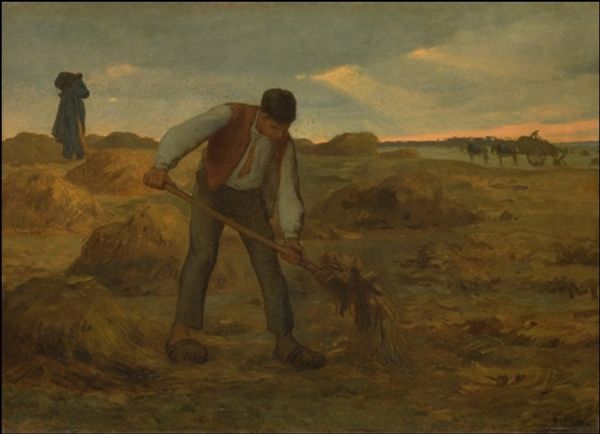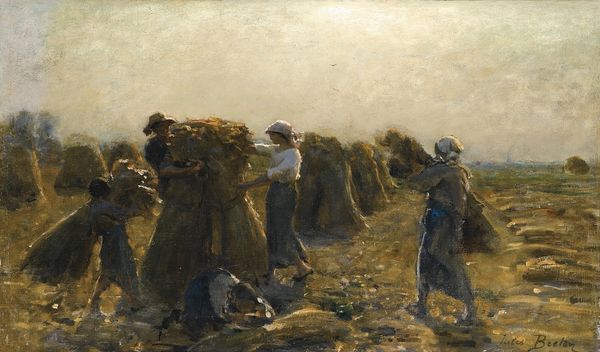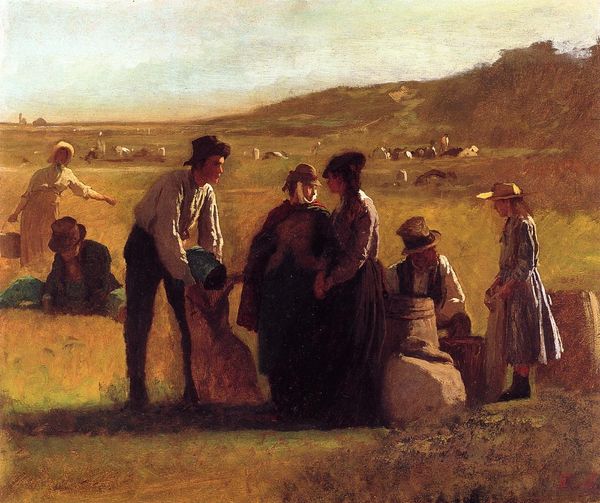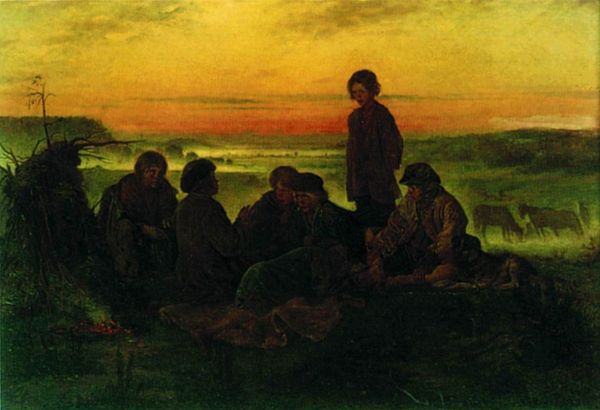
Copyright: Public domain
Editor: This is George Hemming Mason’s “The Harvest Moon,” painted in 1872, using oil paint. There's a real sense of movement as figures work together to bring in the harvest, beneath the moon. How should we look at it? Curator: Well, let's consider the physical demands and social dynamics involved in agricultural labor. Mason isn't just painting a pretty picture; he's representing a collective process. How do the materials used – the paint, the canvas – and his application of them, contribute to our understanding of labor in the Victorian era? Editor: I hadn't thought of it that way, more about the artistic choices, how light from the moon interacts with the golden fields. What about the tools? Scythes over shoulders, the bundled wheat… does their presence change the picture’s meaning? Curator: Absolutely. These tools represent the means of production. Notice how the scythes almost become extensions of the workers' bodies, indicating their physical relationship with the land. Is Mason glorifying rural work, or simply documenting the way things were at the time? Consider, too, the materials the labourers wear and how their style informs an understanding of place, labour, and value in art and life. Editor: That's a more grounded take than I initially had, considering it more for aesthetic appeal. I appreciate the reframing through the labour and the context surrounding agricultural work at the time. Curator: And that interaction— between the labour in the field and the final presentation to the viewer — shapes how the piece should be appreciated. It shifts the painting away from something romantic and moves toward the hard realities of making a living.
Comments
No comments
Be the first to comment and join the conversation on the ultimate creative platform.
